Click on the link to view the page:
Agricultural Revolution 8000 years B.C. made permanent settlements possible in the Predynastic Era and the creation of complex civilizations started. The Persian plateau became the cradle of one of the oldest and most complex civilizations with over 8000 years of well documented history and 6372 years of Shahanshahi Iranian Federalism and 3745 Years of Monotheism: Zoroastrianism. Our undocumented history goes way back, buried deep in what is now southwestern Iran since the ancient Shush and Elamite civilization and Kingdoms.
:: Read the Historical Timeline :: Persian Dynasties and Monarchs of 8000 Years ::

I am only going to dedicate this section to Cyrus the Great Achaemenian Dynasty and his legacy of introducing human rights and freedom in a political setting of the first humane Federal World Empire. Cyrus was the first king who put an end to slavery and dictatorial oppression and his goal was to exterminate such inhuman traditions around the world. The Declaration of Human Rights written by the emperor Cyrus II of Persia has been hailed as the first charter of human rights, predating the Magna Carta by more than one millennium and in 1971 the United Nations was published translation of it in all the official U.N. languages. It is now kept in the British Museum and it is no exaggeration to say that it is one of the most precious historical records of the world. Also a replica of the Cyrus Charter of Human Rights is kept at the United Nations Headquarters in New York.
Hollywood is Not a history lesson! :: Read the true history about the Spartan barbarians
The Persian Empire became the dominant world power for many centuries and the largest empire the world had known, stretched in three continents, east-west from borders of China to Greece and north-south from Central Russia to north Africa. It made possible the first significant and continuous contact between East and West. It was the world's first religiously tolerant empire and consisted of a multitude of different languages, races, religions and cultures. Prior to the rise of the Roman Empire, it set a precedent for the importance of the rule of law, a powerful centralized army and an efficient and systematic state administration. However, the greatest legacy of the Persian Empire was that it demonstrated for the first time how diverse peoples can culturally flourish and economically prosper under one central government. The first system of federal governments was started in the Persian Empire. There were many states that were run by smaller kings who were under the great king or Shahan-Shah (King of Kings) and ultimately a courthouse.
![]() What Persia did not achieve through war, it obtained through diplomacy
What Persia did not achieve through war, it obtained through diplomacy
![]() Persian Empire was democratic in nature and was the first ever Federal system in the world! Each State had absolute internal autonomy to do as they pleased in their own internal affairs. It was a primitive form of Federalism in comparison to today's Federal systems, but imagine back then when everyone including China, Egypt, Greece and Rome practiced slavery and colonialism, Persia granted internal autonomy to all states. All states had control over their affairs, their Educational system, local languages and even their own military forces! The only things that Persepolis required was absolute obedience to central government on international political and military affairs, and of course everyone had to learn Persian as the first or second language. How could they not to? Persian Empire owned the world and was the sole superpower in the globe. Persian was the International Language back then! The Persian Empire is the longest existing empire in world's history and from 2500 years ago Persia ruled the civilized world for at least 1130 years; Median Dynasty 728–549 B.C, Achaemenid Dynasty 559-330 B.C, Parthian Dynasty 250 B.C. - 226 A.D. and the mighty Sassanid Dynasty 226-651 A.D.
Persian Empire was democratic in nature and was the first ever Federal system in the world! Each State had absolute internal autonomy to do as they pleased in their own internal affairs. It was a primitive form of Federalism in comparison to today's Federal systems, but imagine back then when everyone including China, Egypt, Greece and Rome practiced slavery and colonialism, Persia granted internal autonomy to all states. All states had control over their affairs, their Educational system, local languages and even their own military forces! The only things that Persepolis required was absolute obedience to central government on international political and military affairs, and of course everyone had to learn Persian as the first or second language. How could they not to? Persian Empire owned the world and was the sole superpower in the globe. Persian was the International Language back then! The Persian Empire is the longest existing empire in world's history and from 2500 years ago Persia ruled the civilized world for at least 1130 years; Median Dynasty 728–549 B.C, Achaemenid Dynasty 559-330 B.C, Parthian Dynasty 250 B.C. - 226 A.D. and the mighty Sassanid Dynasty 226-651 A.D.
![]() Ancient Persepolis - The ceremonial capital of the Achaemenian Persian Empire
Ancient Persepolis - The ceremonial capital of the Achaemenian Persian Empire

So as you see, Federalism is what made Persia strong! Even in times of war, each nation had to provide their own military force and combine they had to defend Mother Persia! They had to defend the Empire because the Empire guaranteed their internal autonomy, rights, freedom, independence, equality and humanity! This was the system, which Cyrus the Great built. Achaemenid Empire was a very primitive form but the very first Democratic Federal Empire of its kind in the world. Of course after Achaemenids, Federalism was not as strong as during their era, until it eventually faded away after thousands of years of oppression from foreign forces, Especially after the religious Arabo-Invasion/Occupation of Persia.

:: Cyrus the Great whose Freedom Charter, 540 B.C, stated :: “Now that I put the crown of kingdom of Persia I announce that I will respect the traditions, customs and religions of the nations of my empire and never let any of my governors and subordinates look down on or insult them. I will impose my monarchy on no nation. Each is free to accept it, and if any one of them rejects it, I never resolve on war to reign. I will never let anyone oppress any others, and if it occurs, I will take his or her right back and penalize the oppressor. I will never let anyone take possession of movable and landed properties of the others by force or without compensation. Until I am alive, I prevent unpaid, forced labor. Today, I announce that everyone is free to choose a religion. People are free to live in all regions and take up a job provided that they never violate other's rights. No one can be penalized for his or her relatives' faults. I prevent slavery and my governors and subordinates are obliged to prohibit exchanging men and women as slaves within their own ruling domains. Such a tradition should be exterminated the world over.” continue »

![]() Fars province located in southern Persia, is one of the famous provinces of Persia. It was named Parsa, but later under subsequent Greek influence became known as Persepolis, “The city of the Persians”. This expansive land has been the cradle of an ancient civilization, and governmental center of Persian king of kings for centuries. The land has given birth to many great Persian leaders, each of whom was the founder of a great dynasty, the Achaemenians (Cyrus the Great) and Sassanians (Ardashir Babakan). It is this heartland of Iran that has given its name to Persian Language “Parsi”. This is the land of historic monuments, poets and philosophers, warriors, and kings, orchards, roses and fragrant blossoms. Persepolis was the center of the great Persian Empire and was build by the wishes of kings of Persia. All the halls and auditoriums of Persepolis were used for ancient Persian ceremonies. It was the masterpiece of Achaemenian art. Persepolis, is the greatest monument indicating the glory and magnificence of the ancient Persian.
Fars province located in southern Persia, is one of the famous provinces of Persia. It was named Parsa, but later under subsequent Greek influence became known as Persepolis, “The city of the Persians”. This expansive land has been the cradle of an ancient civilization, and governmental center of Persian king of kings for centuries. The land has given birth to many great Persian leaders, each of whom was the founder of a great dynasty, the Achaemenians (Cyrus the Great) and Sassanians (Ardashir Babakan). It is this heartland of Iran that has given its name to Persian Language “Parsi”. This is the land of historic monuments, poets and philosophers, warriors, and kings, orchards, roses and fragrant blossoms. Persepolis was the center of the great Persian Empire and was build by the wishes of kings of Persia. All the halls and auditoriums of Persepolis were used for ancient Persian ceremonies. It was the masterpiece of Achaemenian art. Persepolis, is the greatest monument indicating the glory and magnificence of the ancient Persian.
![]() Main Stairways to Terrace and Gates of Persepolis
Main Stairways to Terrace and Gates of Persepolis
The “Gateway of All Nations” is the entrance into the ancient city of Persepolis. All the subject nations of the Persian Empire, from the Greeks to the Egyptians, would come to Persepolis to offer tribute to the Persian King of Kings at the New Year celebrations at Spring equinox. This significant architectural components of Persepolis “The main hall and gateway of all Nations” was essentially constructed for holding New-Year celebrations. These halls were expanded on a rectangular area with 400 meters of width, 500 meters of length, and approximately 25 meters of height above the surface of the area.
![]() Gateway to all Nations and the entrance into the ancient city of Persepolis
Gateway to all Nations and the entrance into the ancient city of Persepolis

![]() The Persians had a concept of “One World” and the “Unification of All People around the known World”. By accepting the practices and religions of the subject people they created the world's first religiously tolerant empire. They evolved an administrative system that was sufficiently flexible to cater for the multitude of different languages, races, religions and cultures while maintaining the fundamental unity of government necessary to maintain the empire which was the largest empire the world had known, stretched in three continents, east-west from borders of China to Greece and north-south from Central Russia to north Africa.
The Persians had a concept of “One World” and the “Unification of All People around the known World”. By accepting the practices and religions of the subject people they created the world's first religiously tolerant empire. They evolved an administrative system that was sufficiently flexible to cater for the multitude of different languages, races, religions and cultures while maintaining the fundamental unity of government necessary to maintain the empire which was the largest empire the world had known, stretched in three continents, east-west from borders of China to Greece and north-south from Central Russia to north Africa.
![]() Eagle Engraving around the ruins of the Apadana Palace
Eagle Engraving around the ruins of the Apadana Palace
![]() What's so striking about the ruins of Persepolis is the absence of violent imagery on what's left of its stone walls. Among the carvings there are soldiers, but they're not fighting; there are weapons, but they're not drawn. Mainly you see emblems suggesting that something humane went on here instead people of different nations gathering peacefully, bearing gifts, draping their hands amiably on one another's shoulders. In an era noted for its barbarity, Persepolis, it seems, was a relatively cosmopolitan place—and for many Iranians today its ruins are a breathtaking reminder of who their Persian ancestors were and what they did.
What's so striking about the ruins of Persepolis is the absence of violent imagery on what's left of its stone walls. Among the carvings there are soldiers, but they're not fighting; there are weapons, but they're not drawn. Mainly you see emblems suggesting that something humane went on here instead people of different nations gathering peacefully, bearing gifts, draping their hands amiably on one another's shoulders. In an era noted for its barbarity, Persepolis, it seems, was a relatively cosmopolitan place—and for many Iranians today its ruins are a breathtaking reminder of who their Persian ancestors were and what they did.
Cyrus the Great is regarded as one of the most outstanding figures in history. His success in creating and maintaining the Achaemenian Empire was the result of an intelligent blending of diplomatic and military skills and his rule was tempered with wisdom and tact. The Persians called him 'father'; the Greeks, whom he conquered, saw him as “A worthy ruler and lawgiver” and the Jews regarded him as “The Lord's anointed”. His ideals were high, as he laid down that no man was fit to rule unless, he was more capable than all of his subjects. As an administrator Cyrus' insight was great, and he showed himself both intelligent and reasonable, and thereby made his rule easier than that of his previous conquerors. His humanity was equaled by his freedom from pride, which induced him to meet people on the same level, instead of affecting the remoteness and aloofness, which characterized the great monarchs who preceded and followed him. History has further labeled him as a genius, diplomat, manager, and leader of men, the first great propagandist and able strategist. Cyrus was indeed worthy of the title “Great”.
![]() A relief on the terrace, depicting a lion pouncing on its prey
A relief on the terrace, depicting a lion pouncing on its prey

![]() While all other world powers persecuted and discriminated against the Jews (e.g. The Egyptians, Babylonians, Romans and later Germans and the Russians etc.) the Persians were the only world empire who actually liberated and protected the Jews (50,000 Israelites who were imprisoned by Babylonians) and allowed them to return to their native land. Cyrus was the first king who put an end to slavery and dictatorial oppression, his goal was to exterminate such inhuman traditions around the world. By doing so, the Persians pioneered the freedom of religion and culture of the minorities in the world. The Persian Kings supported the local culture and religion. Cyrus was later considered as a messiah sent by Yahweh in the Hebrew Bible (Old Testament) as the patron and deliverer of the Jews. From these statements it appears that Cyrus the Great, king of Persia, was the monarch under whom the captivity of the Jews ended.
While all other world powers persecuted and discriminated against the Jews (e.g. The Egyptians, Babylonians, Romans and later Germans and the Russians etc.) the Persians were the only world empire who actually liberated and protected the Jews (50,000 Israelites who were imprisoned by Babylonians) and allowed them to return to their native land. Cyrus was the first king who put an end to slavery and dictatorial oppression, his goal was to exterminate such inhuman traditions around the world. By doing so, the Persians pioneered the freedom of religion and culture of the minorities in the world. The Persian Kings supported the local culture and religion. Cyrus was later considered as a messiah sent by Yahweh in the Hebrew Bible (Old Testament) as the patron and deliverer of the Jews. From these statements it appears that Cyrus the Great, king of Persia, was the monarch under whom the captivity of the Jews ended.
![]() Gateway to all Nations and the entrance into the ancient city of Persepolis
Gateway to all Nations and the entrance into the ancient city of Persepolis
![]() In the “Persepolis” monuments and structures, one could find the essentials, foundations, and lofty values of the Persian masterful architectures, because it was important for them what they built, why they built it, and for whom they built it. so, they have designed and created such masterpieces which one, by looking at each section of them, would feel pride and exaltation. While staying and appending time in the environment of “Persepolis”, one would feel good, peace, solace, optimism, and humbleness.
In the “Persepolis” monuments and structures, one could find the essentials, foundations, and lofty values of the Persian masterful architectures, because it was important for them what they built, why they built it, and for whom they built it. so, they have designed and created such masterpieces which one, by looking at each section of them, would feel pride and exaltation. While staying and appending time in the environment of “Persepolis”, one would feel good, peace, solace, optimism, and humbleness.

![]() The reign of Darius the Great marked the zenith of the Persian Empire. Upholding the tradition established by Cyrus, Darius valued the rights of all people under his rule. The following inscription appears on his tomb: By the favor of the great god I believe in justice and abhor inequity. It is not my desire that the weak man should have wrong done to him by the mighty... Darius' goal was to be a great law-giver and organizer. He structured the empire under the satrapy system (similar to national and local governments). He built many roads, ports, banking houses (the word “check” comes from old Persian), elaborate underground irrigation systems and a canal to link the Nile to the Red Sea (an early precursor of the Suez Canal).
The reign of Darius the Great marked the zenith of the Persian Empire. Upholding the tradition established by Cyrus, Darius valued the rights of all people under his rule. The following inscription appears on his tomb: By the favor of the great god I believe in justice and abhor inequity. It is not my desire that the weak man should have wrong done to him by the mighty... Darius' goal was to be a great law-giver and organizer. He structured the empire under the satrapy system (similar to national and local governments). He built many roads, ports, banking houses (the word “check” comes from old Persian), elaborate underground irrigation systems and a canal to link the Nile to the Red Sea (an early precursor of the Suez Canal).
![]() Darius the Great is seen Celebrating Victory with the Persian Imperial army
Darius the Great is seen Celebrating Victory with the Persian Imperial army
In January 330 B.C, The king of Macedonia: Alexander, reached Persepolis, the capital of the Persian Empire. Alexander was an admirer of Persian Kings and especially Cyrus the Great. He conquered Persia but the Persian culture conquered him. He married with the Persian Kings: Darius III daughter and called himself an Achaemenid Persian King! Alexander and his Army plundered Persia, He destroyed and burned Persepolis, the magnificent palace complex of the Achaemenid kings in revenge for all the Persian-Greek wars many centuries before and also because he was not yet the sole ruler of the Persian Empire, and it was too dangerous to leave the enormous treasures behind, where his enemies could recapture them. Yet, Alexander paid tribute to Cyrus the Great at his tomb. This shows how much Cyrus the Great was respected, even in the eyes of his fierce enemies. When Alexander returned several years later and saw the ruins, he regretted his act deeply.
![]() A mythical twin-headed animal with the head of an eagle and body of a lion
A mythical twin-headed animal with the head of an eagle and body of a lion

![]() “O man, I am Cyrus son of Cambyses, who founded the empire of Persia and ruled over the World. Do not grudge me my monument.” This is an inscription said, in antiquity, to have graced the Tomb of Cyrus the Great and it is the most imposing monument at Pasargadae. It was here that the great ruler and founder of the Persian Empire established his capital.
“O man, I am Cyrus son of Cambyses, who founded the empire of Persia and ruled over the World. Do not grudge me my monument.” This is an inscription said, in antiquity, to have graced the Tomb of Cyrus the Great and it is the most imposing monument at Pasargadae. It was here that the great ruler and founder of the Persian Empire established his capital.
![]() Pasargadae - Tomb of Cyrus the Great - Rest in Peace
Pasargadae - Tomb of Cyrus the Great - Rest in Peace :: Part I: The Spartan Barbarians :: The Battle of Thermopylae was of course written by the classical Greek author, Herodotus. His book, “The Histories” became part of Western folklore only recently. It wasn't until about 1850 that America embraced Herodotus as the leading authority on Persian history. Before 1850, however, the West had a very favorable and true impression of the Federal Persian Empire. That's because the West's main source for Persian history was the Bible and the Cyropaedia in which both glorified the monarchy of Cyrus The Great and the democratic nature of the Persian Empire. In the wake of two bloody revolutions fought by America and France to liberate themselves from their own monarchies, a major campaign began, around the mid 19th century, to promote democracy throughout the rest of Europe, and Herodotus was the perfect propaganda tool and was quickly ushered in as the “Father of History”. Around 1850, his “Battle of Thermopylae” came to symbolize the West's struggle for democracy against the powerful forces of Persia's monarchy. The story is easy to buy into: 300 brave Spartans saved Western democracy from 3 million evil Persians! But aside from the fanciful numbers, this whimsical tale has far graver consequences than a mere bias account of history. The “Battle of Thermopylae” has been the single most powerful wedge, which has divided East and West for over 2 millennia. In a time when East and West should be reconciling their differences, along comes the movie “300” to drive that wedge even deeper. Herodotus is accepted blindly by virtually all Western demographics. Yet we know that slavery was an integral cornerstone of Greek society. In monarchic Persia, however, women enjoyed a level of gender equality unmatched even to this day, and slavery was not practiced. The fact is, Persia's monarchy was more free than Athens' “democracy”, all because of Persia's Bill of Rights.
:: Part I: The Spartan Barbarians :: The Battle of Thermopylae was of course written by the classical Greek author, Herodotus. His book, “The Histories” became part of Western folklore only recently. It wasn't until about 1850 that America embraced Herodotus as the leading authority on Persian history. Before 1850, however, the West had a very favorable and true impression of the Federal Persian Empire. That's because the West's main source for Persian history was the Bible and the Cyropaedia in which both glorified the monarchy of Cyrus The Great and the democratic nature of the Persian Empire. In the wake of two bloody revolutions fought by America and France to liberate themselves from their own monarchies, a major campaign began, around the mid 19th century, to promote democracy throughout the rest of Europe, and Herodotus was the perfect propaganda tool and was quickly ushered in as the “Father of History”. Around 1850, his “Battle of Thermopylae” came to symbolize the West's struggle for democracy against the powerful forces of Persia's monarchy. The story is easy to buy into: 300 brave Spartans saved Western democracy from 3 million evil Persians! But aside from the fanciful numbers, this whimsical tale has far graver consequences than a mere bias account of history. The “Battle of Thermopylae” has been the single most powerful wedge, which has divided East and West for over 2 millennia. In a time when East and West should be reconciling their differences, along comes the movie “300” to drive that wedge even deeper. Herodotus is accepted blindly by virtually all Western demographics. Yet we know that slavery was an integral cornerstone of Greek society. In monarchic Persia, however, women enjoyed a level of gender equality unmatched even to this day, and slavery was not practiced. The fact is, Persia's monarchy was more free than Athens' “democracy”, all because of Persia's Bill of Rights.
![]() Engraving of a Winged Human Faced Lion guardian in Persepolis
Engraving of a Winged Human Faced Lion guardian in Persepolis :: Part II: The Spartan Barbarians :: “I am Xerxes, Emperor of Persia, son of Darius the Great, grandson of Cyrus the Great. My grandfather Cyrus prevented slavery and liberated the Jews from their Babylonian exile and let them return to Judea and rebuild their temple. I myself married Esther, a Jew, my Queen. Our women are very valuable beings with very important positions in our Courthouse, Military and State Department. I come from a long line of believers in the One God preached by Zarathustra, our Persian prophet whose teachings have influenced the Jews during their exile among us. I refer specifically to their concepts of Satan, Heaven and the future Messiah which weren't part of their pre-exile belief system and are clearly borrowings from our Persian religion. I am now embarking on the conquest of Greece, a backward region populated by primitive polytheists who worship capricious amoral deities and practice absurd religious rites. But my ancestors and I, having already conquered many Ionian Greeks, respect Greek philosophers and indeed have many of them in our employ. We have established a multi-ethnic empire. In that empire, Greeks fill important roles from the Mediterranean to India. These Spartans confronting us at Thermopylae are cruel men who annually kill for sport! And make war on the defenseless helots (Greek slaves) that live around them. They have nothing to tell us Persians or the world in general about freedom!”.
:: Part II: The Spartan Barbarians :: “I am Xerxes, Emperor of Persia, son of Darius the Great, grandson of Cyrus the Great. My grandfather Cyrus prevented slavery and liberated the Jews from their Babylonian exile and let them return to Judea and rebuild their temple. I myself married Esther, a Jew, my Queen. Our women are very valuable beings with very important positions in our Courthouse, Military and State Department. I come from a long line of believers in the One God preached by Zarathustra, our Persian prophet whose teachings have influenced the Jews during their exile among us. I refer specifically to their concepts of Satan, Heaven and the future Messiah which weren't part of their pre-exile belief system and are clearly borrowings from our Persian religion. I am now embarking on the conquest of Greece, a backward region populated by primitive polytheists who worship capricious amoral deities and practice absurd religious rites. But my ancestors and I, having already conquered many Ionian Greeks, respect Greek philosophers and indeed have many of them in our employ. We have established a multi-ethnic empire. In that empire, Greeks fill important roles from the Mediterranean to India. These Spartans confronting us at Thermopylae are cruel men who annually kill for sport! And make war on the defenseless helots (Greek slaves) that live around them. They have nothing to tell us Persians or the world in general about freedom!”.
 :: Part III: The reason behind the War :: The Greeks had been carrying out terrorist attacks on Persian holdings for years. They had attacked Persian cities, set fire to Persian temples, disrupted key trade routes, and pirated merchant ships crossing the Bosphorus. They incited rebellions inside Persian provinces, but perhaps most abhorrent to the Persians was the ease by which the Greeks broke their treaties and betrayed Persia's trust. Rather than resort to violence Persia tried to keep the Greeks in check by financially supporting Greek politicians who were “pro-Persian,” But what finally triggered Persia's wrath was an act rarely mentioned in the West, though well documented, even by Herodotus (Father of History). In 498 B.C, Athens carried out a terrorist attack on Sardis, a major Persian city. The Athenians, set fire to the “outlying parts” of Sardis trapping most of its population “in a ring of fire”, literally killing thousands of innocent civilians. The Spartans were not even targets of Persia's attack, until they violated a universal protocol by killing a Persian messenger who was just asking for Sparta's submission. The Spartans were by all accounts ruthless savages who murdered Greek slaves known as “Helots” just for sport, cultivated a culture of thievery and rape, and practiced infanticide. Sparta was not even democratic. It was an oligarchy at best. Despite knowing all this, the West continues to absurdly hail the Spartans as the saviors of Western democracy.
:: Part III: The reason behind the War :: The Greeks had been carrying out terrorist attacks on Persian holdings for years. They had attacked Persian cities, set fire to Persian temples, disrupted key trade routes, and pirated merchant ships crossing the Bosphorus. They incited rebellions inside Persian provinces, but perhaps most abhorrent to the Persians was the ease by which the Greeks broke their treaties and betrayed Persia's trust. Rather than resort to violence Persia tried to keep the Greeks in check by financially supporting Greek politicians who were “pro-Persian,” But what finally triggered Persia's wrath was an act rarely mentioned in the West, though well documented, even by Herodotus (Father of History). In 498 B.C, Athens carried out a terrorist attack on Sardis, a major Persian city. The Athenians, set fire to the “outlying parts” of Sardis trapping most of its population “in a ring of fire”, literally killing thousands of innocent civilians. The Spartans were not even targets of Persia's attack, until they violated a universal protocol by killing a Persian messenger who was just asking for Sparta's submission. The Spartans were by all accounts ruthless savages who murdered Greek slaves known as “Helots” just for sport, cultivated a culture of thievery and rape, and practiced infanticide. Sparta was not even democratic. It was an oligarchy at best. Despite knowing all this, the West continues to absurdly hail the Spartans as the saviors of Western democracy.
![]() The Eagle is a symbol for air/freedom and it is now the logo of the country's national airline
The Eagle is a symbol for air/freedom and it is now the logo of the country's national airline History is no longer written by the victors, it is written by the ignorant filmmakers. When will the children of Persia rise up and fight back using the same weapon Hollywood has used for years to denigrate the legacy of their ancestors? First there was Oliver Stone's: “Alexander”, then “One Night with the King”, and now “300” just to name a few, next could well be the “Battle of Marathon” another one of Herodotus's glowing accounts of ancient Persia. When will we abandon our defensive posture and begin to write our own history again? Perhaps the movie “300” was a necessary wake up call. But Persia bashing will never disappear on its own. It is the main villain in the Western saga. The only way it will change is through the power of film. What makes Herodotus's propaganda so difficult to refute is that its peppered with facts. But in reality, its a desperate diatribe. Perhaps his biggest ploy is his attempt to equate democracy with freedom. These two words are used virtually interchangeably throughout his book. And the West has swallowed it hook-line-and-sinker.
History is no longer written by the victors, it is written by the ignorant filmmakers. When will the children of Persia rise up and fight back using the same weapon Hollywood has used for years to denigrate the legacy of their ancestors? First there was Oliver Stone's: “Alexander”, then “One Night with the King”, and now “300” just to name a few, next could well be the “Battle of Marathon” another one of Herodotus's glowing accounts of ancient Persia. When will we abandon our defensive posture and begin to write our own history again? Perhaps the movie “300” was a necessary wake up call. But Persia bashing will never disappear on its own. It is the main villain in the Western saga. The only way it will change is through the power of film. What makes Herodotus's propaganda so difficult to refute is that its peppered with facts. But in reality, its a desperate diatribe. Perhaps his biggest ploy is his attempt to equate democracy with freedom. These two words are used virtually interchangeably throughout his book. And the West has swallowed it hook-line-and-sinker.
Better to live for just a single day as a ruler than to live for forty years as an object slave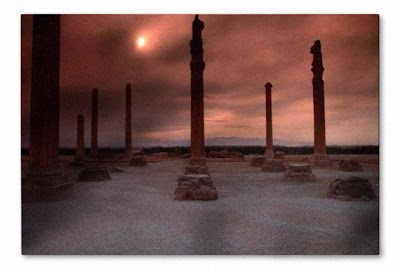
![]() The winged symbol is the Fravashi, the guardian spirit of an individual
The winged symbol is the Fravashi, the guardian spirit of an individual
![]()
 The image below is showing the more heavily armored, Elite Units of The Persian Imperial Armed Forces called “The Immortals” who performed the dual roles of both Imperial Guard and standing army during the Achaemenid Empire's expansion. They formed the elite core of the Persian army in times of war and the royal guard in times of peace in Achaemenid Persia. The elite force were known as “The Immortals” because they were kept constantly at a strength of exactly 10,000 men, every killed or seriously wounded member was immediately replaced. To insure loyalty, the original members of this “immortal” fighting machine were Persians by bloodline trained form early childhood (age 7+). Not everyone could become one of the 10,000 since the training was very rigorous and hard both physically and psychologically. They also followed a strict adherence to the religion of the prophet Zarathustra and his teachings. “The Immortals” were mainly used during the last stages of each battle as reinforcement by the order of the King of Kings to shock the enemies strategically.
The image below is showing the more heavily armored, Elite Units of The Persian Imperial Armed Forces called “The Immortals” who performed the dual roles of both Imperial Guard and standing army during the Achaemenid Empire's expansion. They formed the elite core of the Persian army in times of war and the royal guard in times of peace in Achaemenid Persia. The elite force were known as “The Immortals” because they were kept constantly at a strength of exactly 10,000 men, every killed or seriously wounded member was immediately replaced. To insure loyalty, the original members of this “immortal” fighting machine were Persians by bloodline trained form early childhood (age 7+). Not everyone could become one of the 10,000 since the training was very rigorous and hard both physically and psychologically. They also followed a strict adherence to the religion of the prophet Zarathustra and his teachings. “The Immortals” were mainly used during the last stages of each battle as reinforcement by the order of the King of Kings to shock the enemies strategically.
![]() The Elite Units of The Persian Imperial Armed Forces called “The Immortals”
The Elite Units of The Persian Imperial Armed Forces called “The Immortals”
 Persepolis was more than a complex of palaces; it was the cult city, the sacred heart of the empire. During the reign of Darius the Great a decision of incalculable importance was made. It was a decision which could be made by the King alone, for it concerned the capital of his empire. Cyrus the Great had established his capital at Pasargadae, and there he was buried in an enormous tomb shaped like the wooden huts of his ancestors. Suddenly, for reasons that no one knows, Darius abandoned Pasargadae and made his capital thirty miles away at a place which came to be called Persepolis, “the city of the Persians.”
Persepolis was more than a complex of palaces; it was the cult city, the sacred heart of the empire. During the reign of Darius the Great a decision of incalculable importance was made. It was a decision which could be made by the King alone, for it concerned the capital of his empire. Cyrus the Great had established his capital at Pasargadae, and there he was buried in an enormous tomb shaped like the wooden huts of his ancestors. Suddenly, for reasons that no one knows, Darius abandoned Pasargadae and made his capital thirty miles away at a place which came to be called Persepolis, “the city of the Persians.”
![]() Reconstruction of Persepolis, the royal ceremonial capital of the Persian Empire
Reconstruction of Persepolis, the royal ceremonial capital of the Persian Empire
![]() The Grand Stairway, the Gate of All Nations, the Avenue of the Army and the Throne Hall are all parts of a concept. Together they form the processional route of the army from the level of Marv-Dasht to the Throne Hall and back. The “Gateway of All Nations” was the entrance into the ancient city of Persepolis. All the subject nations of the Persian Empire, from the Greeks to the Egyptians, would come to Persepolis to offer tribute to the Persian King of Kings at the New Year celebrations at Spring equinox. One can vividly imagine the formations of soldiers marching between the Throne Hall and the Army Gatehouse and further through to the Gatehouse flanked by the huge carved stone bulls of the southern portal, then through this building and exiting through the north portal and into the arrow-straight Avenue of the Army heading west toward the Gate of All Nations - there greeted by the huge winged bulls with human faces.
The Grand Stairway, the Gate of All Nations, the Avenue of the Army and the Throne Hall are all parts of a concept. Together they form the processional route of the army from the level of Marv-Dasht to the Throne Hall and back. The “Gateway of All Nations” was the entrance into the ancient city of Persepolis. All the subject nations of the Persian Empire, from the Greeks to the Egyptians, would come to Persepolis to offer tribute to the Persian King of Kings at the New Year celebrations at Spring equinox. One can vividly imagine the formations of soldiers marching between the Throne Hall and the Army Gatehouse and further through to the Gatehouse flanked by the huge carved stone bulls of the southern portal, then through this building and exiting through the north portal and into the arrow-straight Avenue of the Army heading west toward the Gate of All Nations - there greeted by the huge winged bulls with human faces.
![]() The East Portal of the Apadana Palace of Darius the Great
The East Portal of the Apadana Palace of Darius the Great
![]() From the exterior of the grounds on the level of the Marv-Dasht an observer would be offered an impressive display: the Imperial Armed Forces “Immortals” marching through the stone bull guarded west portal of the Gate of All Nations and on to the Grand Stairway. The Apadana (Audience Hall) was the first building constructed and is the most important on the terrace of Persepolis. It stood architecturally and in the sense of urban planning as the hub of the terrace. It is an architectural wonder of the ancient world - its clever construction enabled dimensions without comparison in its time.
From the exterior of the grounds on the level of the Marv-Dasht an observer would be offered an impressive display: the Imperial Armed Forces “Immortals” marching through the stone bull guarded west portal of the Gate of All Nations and on to the Grand Stairway. The Apadana (Audience Hall) was the first building constructed and is the most important on the terrace of Persepolis. It stood architecturally and in the sense of urban planning as the hub of the terrace. It is an architectural wonder of the ancient world - its clever construction enabled dimensions without comparison in its time.
![]() The largest and most complex building in Persepolis was the Audience Hall
The largest and most complex building in Persepolis was the Audience Hall
![]() King Xerxes of Persia held a one hundred and eighty-day feast in Susa to display the vast wealth of his kingdom and the splendor and glory of his majesty. The King ordered his queen Vashti to appear before him and his guests wearing her crown, to show off her beauty. But when the attendants delivered the king's command, Queen Vashti refused to come. Furious at her refusal to obey, the King asked his wise men and the seven princes of Persia for advice, according to the law; they advised the King to search for a new queen. The King followed this advice, then began searching for a new queen by means of a beauty contest. Beautiful young women were gathered to the palace from every province. Esther was advanced for this role by Mordecai, her cousin and guardian. For 12 months each woman underwent beauty treatments in the harem, after which she would go to the King. She was given anything she wanted to take with her from the harem to the King's palace. King Xerxes chose Esther to be his wife and queen.
King Xerxes of Persia held a one hundred and eighty-day feast in Susa to display the vast wealth of his kingdom and the splendor and glory of his majesty. The King ordered his queen Vashti to appear before him and his guests wearing her crown, to show off her beauty. But when the attendants delivered the king's command, Queen Vashti refused to come. Furious at her refusal to obey, the King asked his wise men and the seven princes of Persia for advice, according to the law; they advised the King to search for a new queen. The King followed this advice, then began searching for a new queen by means of a beauty contest. Beautiful young women were gathered to the palace from every province. Esther was advanced for this role by Mordecai, her cousin and guardian. For 12 months each woman underwent beauty treatments in the harem, after which she would go to the King. She was given anything she wanted to take with her from the harem to the King's palace. King Xerxes chose Esther to be his wife and queen.
![]() Empress Vashti in the Magnificent Queen's Palace, also known as “Harem of Xerxes”
Empress Vashti in the Magnificent Queen's Palace, also known as “Harem of Xerxes”
![]() The Magnificent Queen's Palace become to be known as “Harem of Xerxes” and it was a safe residence for the royal ladies and other mighty women of Court. In monarchic Persia, women enjoyed a level of gender equality unmatched even to this day! Many ancient Persian cities and states were ruled by women and had their army totally under control of women. Women in Persia were very valuable beings; they often had important positions in the Courthouse, Ministries, Military, State Department, and other official administrations etc. Later on, during the First Arabic invasion, most of the Persian Women gathered Commando and Guerrilla armies, and some associated with their fellow men, combining the resistance forces against the foreign oppressor. continue »
The Magnificent Queen's Palace become to be known as “Harem of Xerxes” and it was a safe residence for the royal ladies and other mighty women of Court. In monarchic Persia, women enjoyed a level of gender equality unmatched even to this day! Many ancient Persian cities and states were ruled by women and had their army totally under control of women. Women in Persia were very valuable beings; they often had important positions in the Courthouse, Ministries, Military, State Department, and other official administrations etc. Later on, during the First Arabic invasion, most of the Persian Women gathered Commando and Guerrilla armies, and some associated with their fellow men, combining the resistance forces against the foreign oppressor. continue »
![]() Palace of the Queen, later become to be known as “Harem of Xerxes”
Palace of the Queen, later become to be known as “Harem of Xerxes”

Persepolis was also home to King Xerxes and his Jewish wife Queen Esther. This is where Esther and her uncle Mordecai saved the Jews from the plotting of Haman. You can hear the whole megillah at a Purim party or read all about it in the biblical book of Esther. Here's a doorway to Xerxes' & Esther's palace.
![]() Xerxes the Great with Shahbanu Queen Esther under the Lion in the Palace
Xerxes the Great with Shahbanu Queen Esther under the Lion in the Palace
Cyrus the Great entered the city of Babylon in 539 B.C, and freed the Jews from captivity. He liberated and protected the 50,000 Israelites who were imprisoned by Babylonians and allowed them to return to their native land. Cyrus was the first king who put an end to slavery and dictatorial oppression, his goal was to exterminate such inhuman traditions around the world. By doing so, the Persians pioneered the freedom of religion and culture of the minorities in the world. The Persian Kings supported the local culture and religion. Cyrus was later considered as a messiah sent by Yahweh in the Hebrew Bible (Old Testament) as the patron and deliverer of the Jews. From these statements it appears that Cyrus the Great, king of Persia, was the monarch under whom the captivity of the Jews ended. continue »
![]() Two Eagle-Headed Griffin Statues with a body of a Lion Guarding the Entrance
Two Eagle-Headed Griffin Statues with a body of a Lion Guarding the Entrance
![]() The Interior of the Palace - Private Residence of the King
The Interior of the Palace - Private Residence of the King
![]() Cyrus the Great was a first in human history, for he was the first to conceive of an idea that would forever fire the political and social imaginations of the people touched by the Persians. That idea? Conquer the world. Up until Cyrus, no culture or individual had ever really thought this one up. Territorial conquests, like monarchical power, were justified on religious grounds, but these religious grounds never gave rise to the notion that one's religious duty was to conquer the whole of the world as you knew it. The Persian Empire was democratic in nature and was the first ever Federal system in the world!
Cyrus the Great was a first in human history, for he was the first to conceive of an idea that would forever fire the political and social imaginations of the people touched by the Persians. That idea? Conquer the world. Up until Cyrus, no culture or individual had ever really thought this one up. Territorial conquests, like monarchical power, were justified on religious grounds, but these religious grounds never gave rise to the notion that one's religious duty was to conquer the whole of the world as you knew it. The Persian Empire was democratic in nature and was the first ever Federal system in the world!
Wine History and Timeline: Wine has a complex and detailed history from its development to the spread of wine production methods throughout the world. The earliest evidence of wine production comes from an area in Persia called Hajji Firuz Tepe. Here, archeologists discovered the first wine press along with an amphora (a large vase with a narrow neck used primarily to store wine and olive oil) that was layered with the residue of tannin and tartrate crystals, both of which are found in wine. Carbon dating estimates that these artifacts to date back to approximately 6000 B.C. The Persians exported/traded wine as far as Cuprus and Egypt.
![]() Wine History through the Ancient World of Persia
Wine History through the Ancient World of Persia
![]() The 25 meter high columns were the tallest and thinnest that architects had mastered - and construction-wise, it was a clever feat. In many respects its construction was a masterpiece of architecture. The architects of Darius had the courage to raise the height of the columns 1.5 meters higher than those of the Temple of Artemisia at Ephesus and to refine the tapering of the diameter to 1:12.
The 25 meter high columns were the tallest and thinnest that architects had mastered - and construction-wise, it was a clever feat. In many respects its construction was a masterpiece of architecture. The architects of Darius had the courage to raise the height of the columns 1.5 meters higher than those of the Temple of Artemisia at Ephesus and to refine the tapering of the diameter to 1:12.
![]() To the north of Xerxes' palace was a portico, facing the Apadana
To the north of Xerxes' palace was a portico, facing the Apadana
![]() Darius the Great's pride at the superb craftsmanship is evident by his ordering the following inscription on all 18 niches and window frames: “Frames of stone, made for the Palace of King Darius.” In modern day words: “Made in Persia.”
Darius the Great's pride at the superb craftsmanship is evident by his ordering the following inscription on all 18 niches and window frames: “Frames of stone, made for the Palace of King Darius.” In modern day words: “Made in Persia.”
![]() East Portico mythical twin-headed Bull-Lion outside the Apadana Palace
East Portico mythical twin-headed Bull-Lion outside the Apadana Palace
![]() Cyrus the Great was killed in battlefield from a wound inflicted from a poisonous arrow. He is considered as the most respected world leaders to date. He always fought side by side with his soldiers and never left them alone in the battlefield. He respected the culture, language and religion of subdued nations and did not impose Zoroastrian religion or assimilate nations in similar methods. He considered all nations equal in terms of their rights. He was a very down to earth person and his wish was to be buried in Pasargadae in order to turn into Persian soil once again. He apologizes to people for not being able to use the soil of his tomb for some time. Cyrus the great, the founder of the greatest form of united nations to date rests in peace in Pasargadae shedding light on the future of the world civilization.
Cyrus the Great was killed in battlefield from a wound inflicted from a poisonous arrow. He is considered as the most respected world leaders to date. He always fought side by side with his soldiers and never left them alone in the battlefield. He respected the culture, language and religion of subdued nations and did not impose Zoroastrian religion or assimilate nations in similar methods. He considered all nations equal in terms of their rights. He was a very down to earth person and his wish was to be buried in Pasargadae in order to turn into Persian soil once again. He apologizes to people for not being able to use the soil of his tomb for some time. Cyrus the great, the founder of the greatest form of united nations to date rests in peace in Pasargadae shedding light on the future of the world civilization.
![]() :: Cyrus The Great :: “O, man, whoever thou art and whenever thou comes, for I know that thou wilt come, I am Cryus, and I won for the Persians their empire. Do not, therefore, begrudge me this little earth which covers my body”
:: Cyrus The Great :: “O, man, whoever thou art and whenever thou comes, for I know that thou wilt come, I am Cryus, and I won for the Persians their empire. Do not, therefore, begrudge me this little earth which covers my body”
![]() Pasargadae - The Palace of Peace and the Tomb of Cyrus the Great
Pasargadae - The Palace of Peace and the Tomb of Cyrus the Great
![]() By a common mistake, people refer to “Persepolis” as “Throne of Jamshid”, a mythological character in Ferdowsi's Shahnameh (Epic of Kings), for in Shahnameh's myths it is Jamshid who possesses the Powerful demons and has influence upon them. Some people believed that such magnificent and enormous structures can only be made and created by these Powerful demons.
By a common mistake, people refer to “Persepolis” as “Throne of Jamshid”, a mythological character in Ferdowsi's Shahnameh (Epic of Kings), for in Shahnameh's myths it is Jamshid who possesses the Powerful demons and has influence upon them. Some people believed that such magnificent and enormous structures can only be made and created by these Powerful demons.
The laws of history say that every Great Empire falls apart in the end...
“A great civilization is not conquered from without until it destroys itself from within.”






















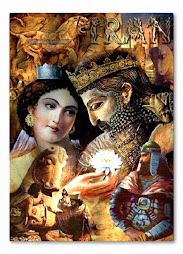

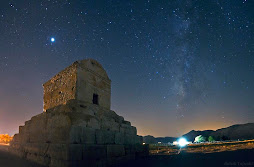



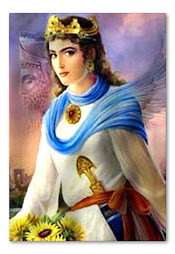



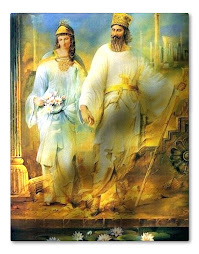

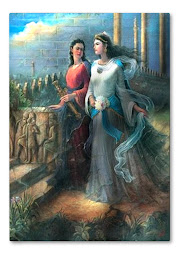
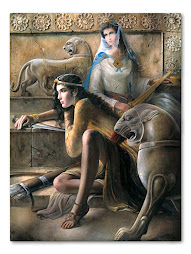
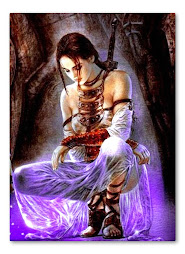

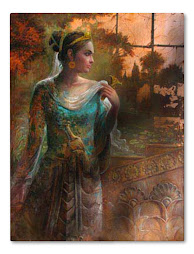
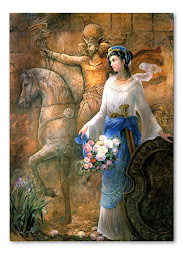
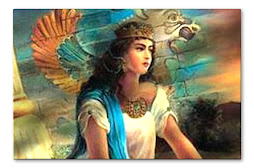
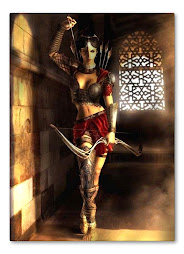
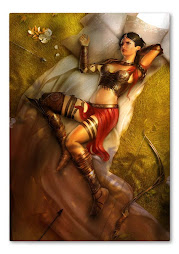
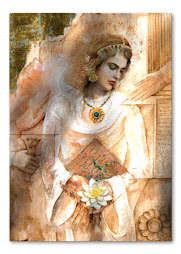

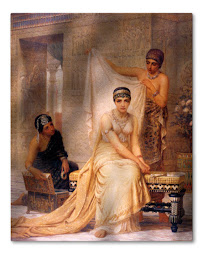
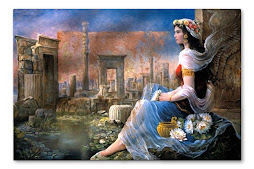

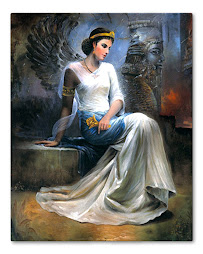
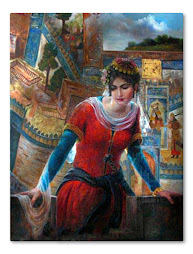
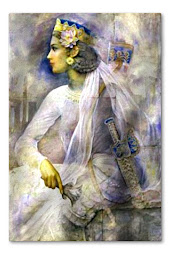
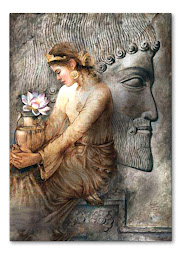
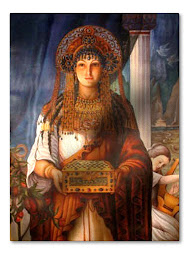
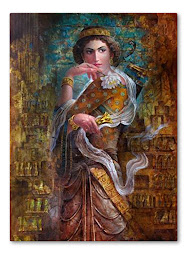
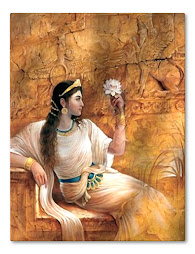
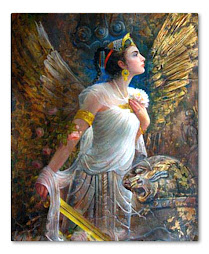
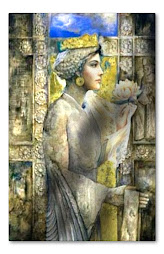



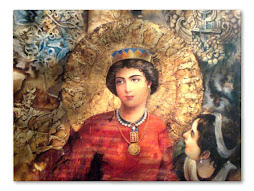



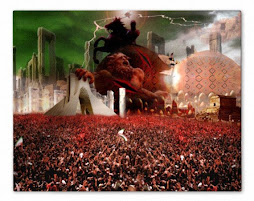


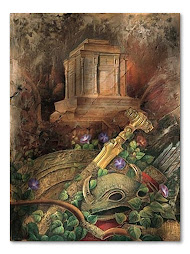

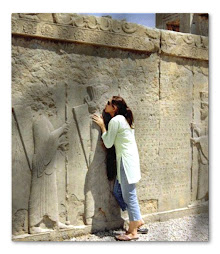
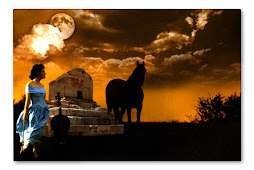

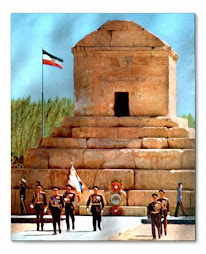
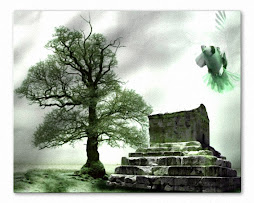
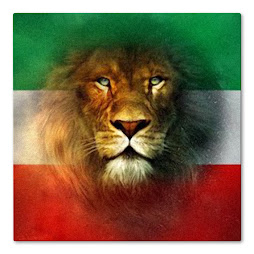
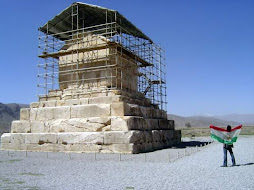























.jpg)
